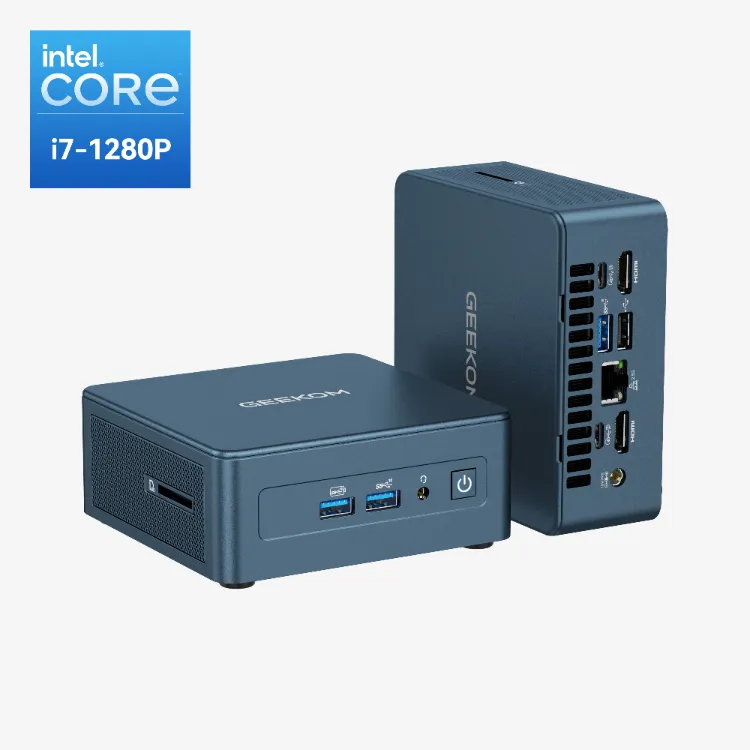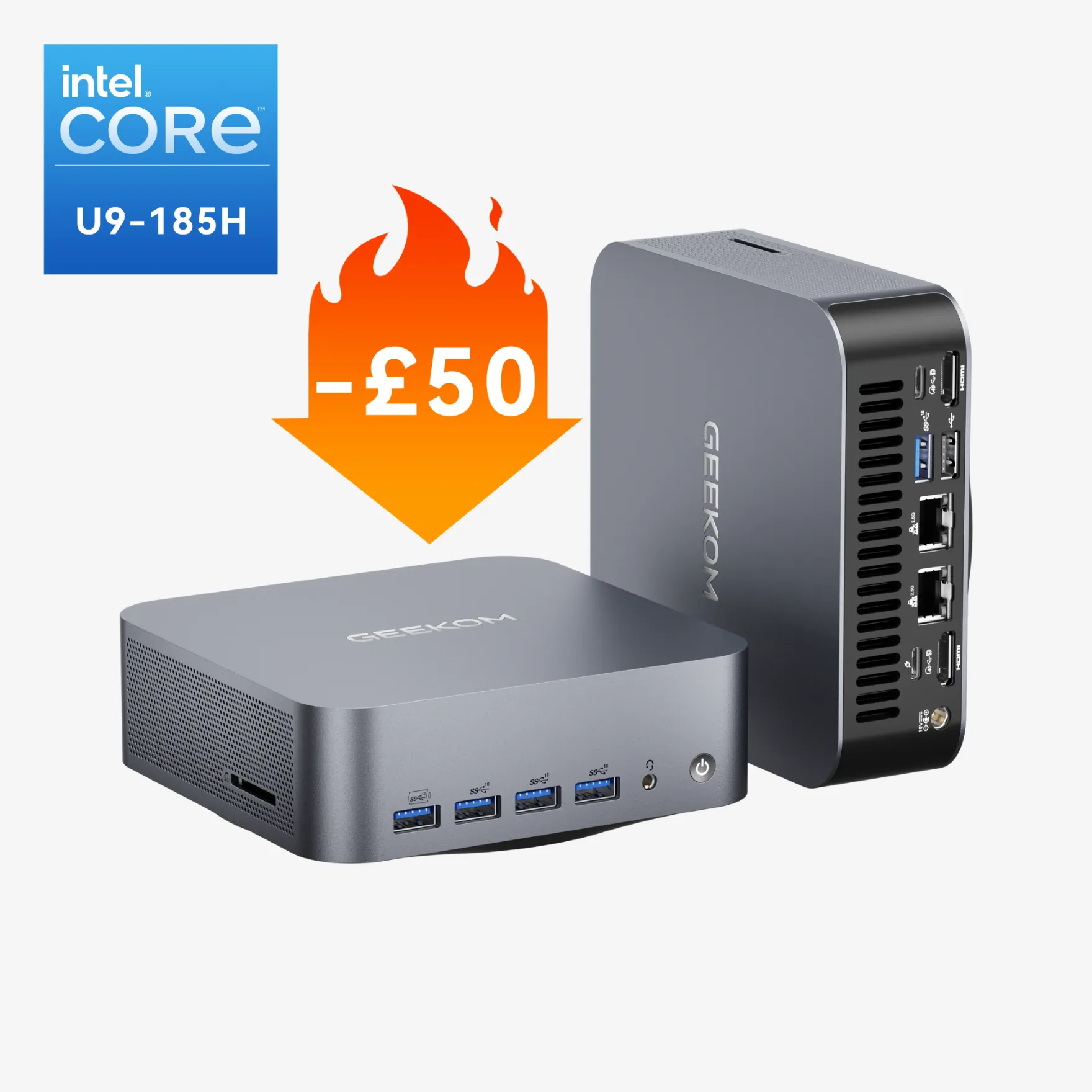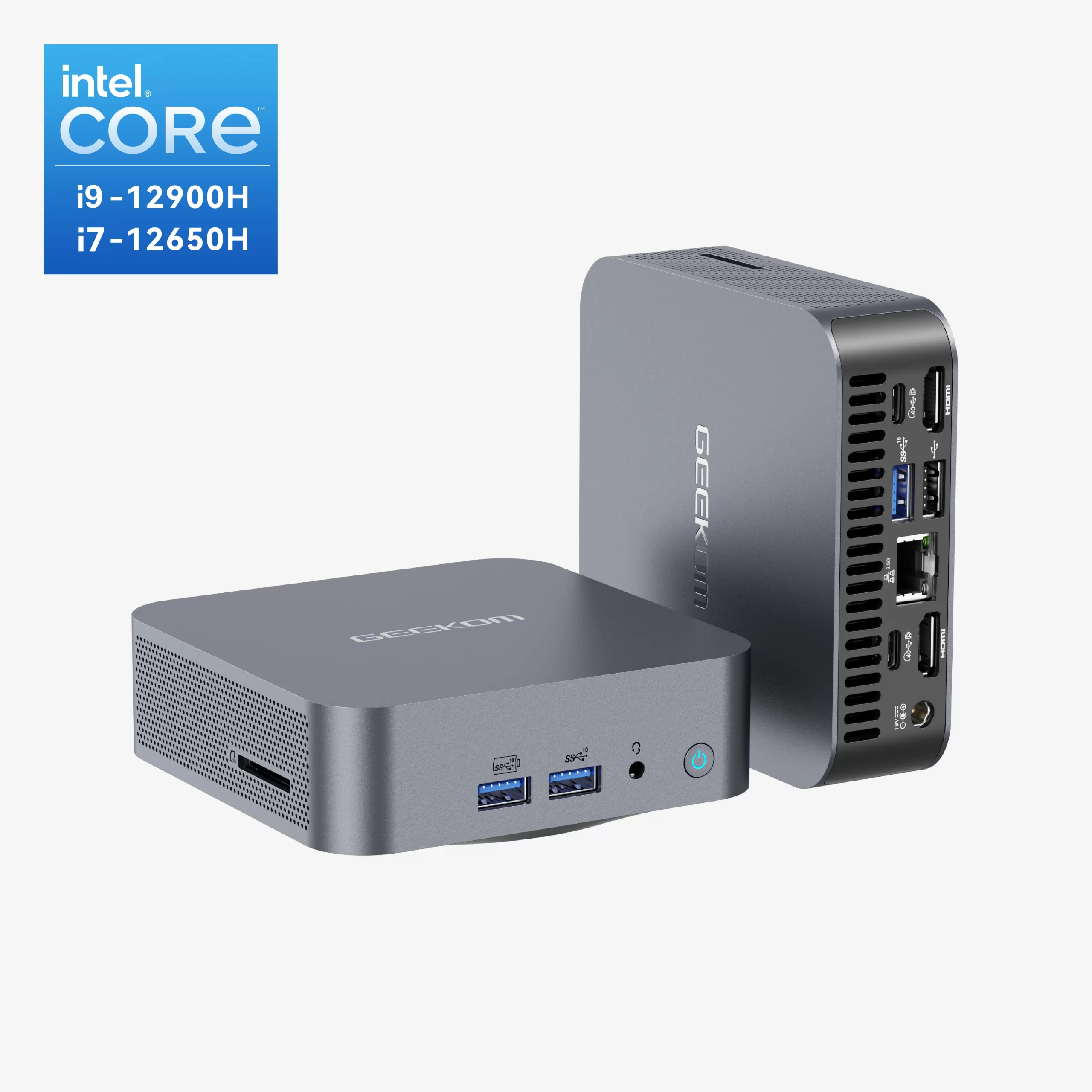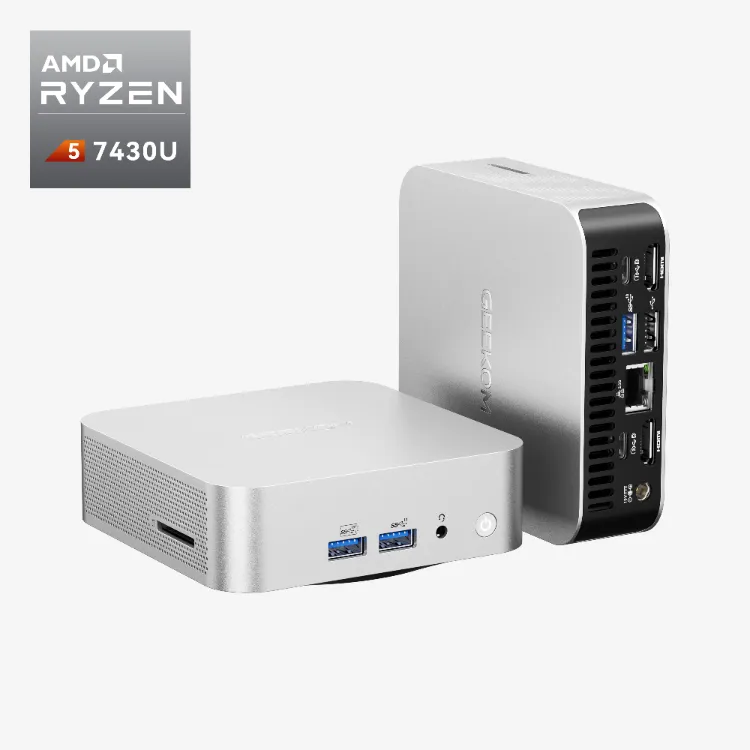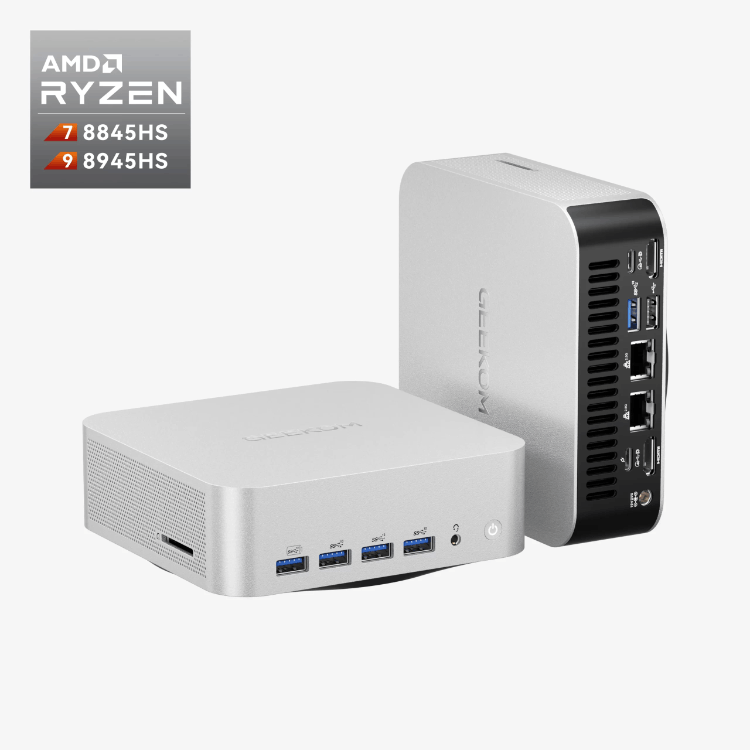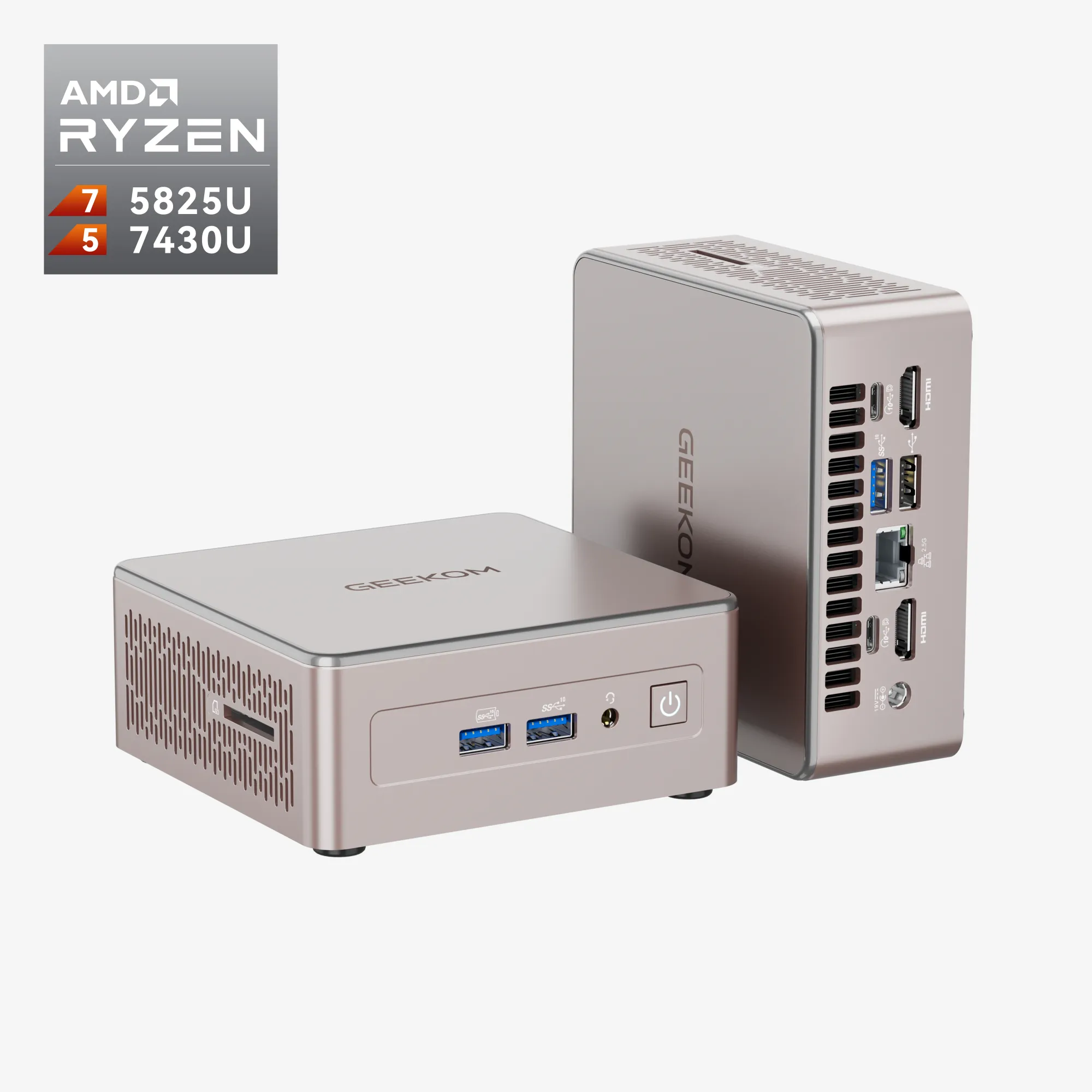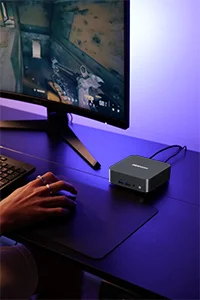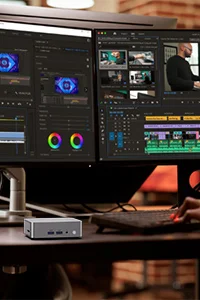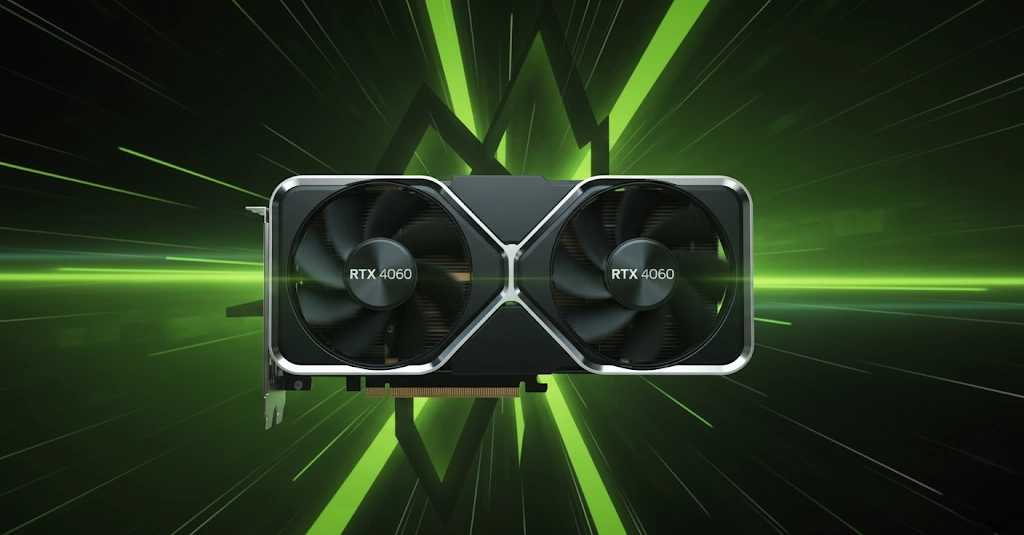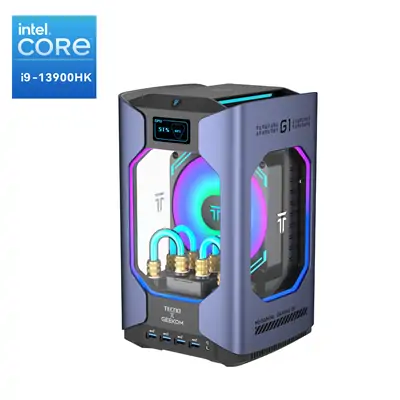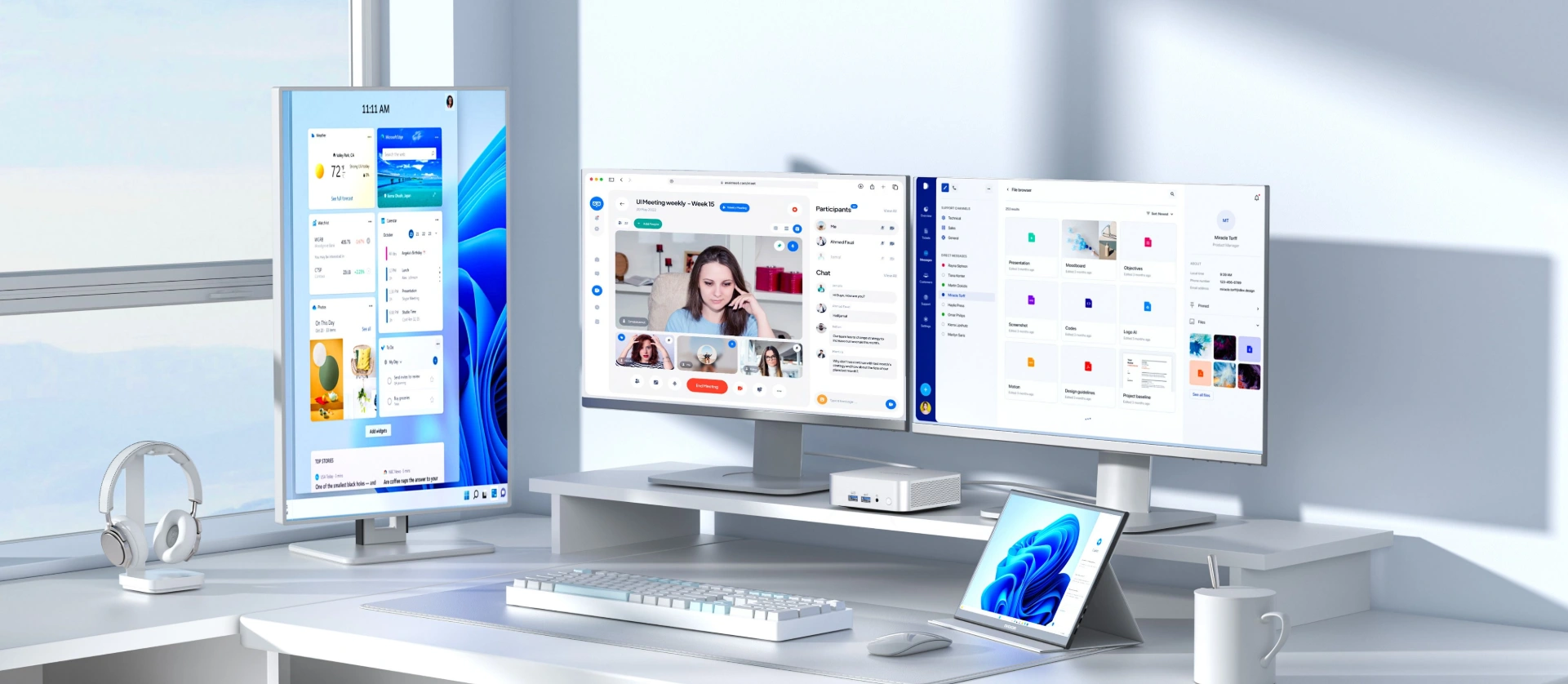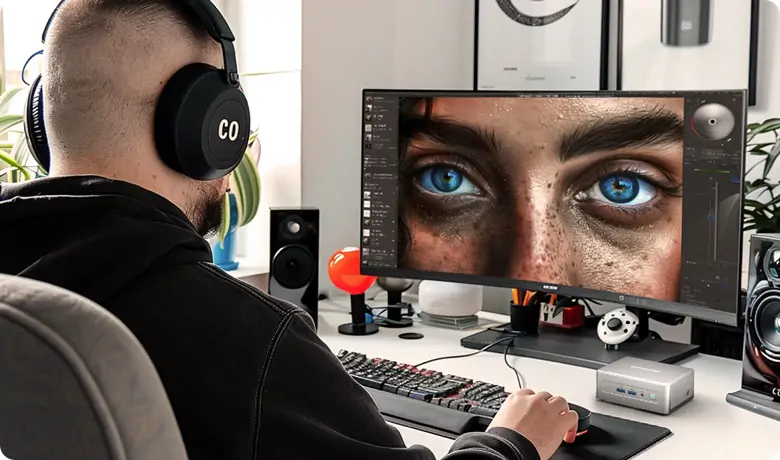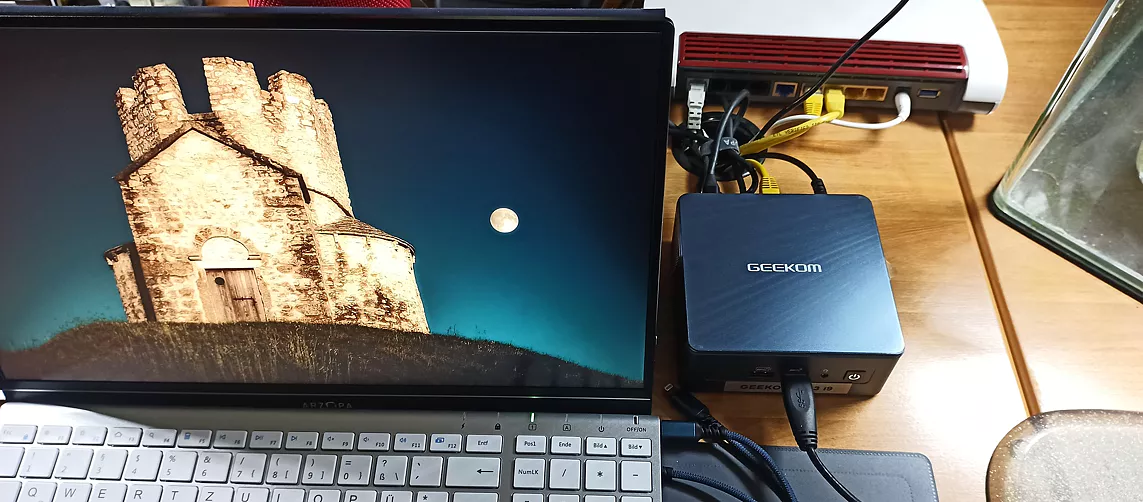Efficiency, modern features, and the eternal battle for the best price-performance ratio characterise the mid-range GPU landscape in 2026. In this highly competitive segment, the RTX 4060 positions itself as a compelling choice for demanding 1080p gamers who don’t want to compromise on ray tracing and AI-accelerated features. With Ada Lovelace architecture, DLSS 3 Frame Generation, and impressive energy efficiency, it promises just the right balance between performance and sensibility.
NVIDIA GeForce RTX 4060 Overview
The NVIDIA GeForce RTX 4060 brings Ada Lovelace to the mid-range and targets gamers who want maximum efficiency and modern features. DLSS 3 with Frame Generation, advanced ray tracing, and NVIDIA’s latest encoders ensure the card remains a solid choice in 2026. Those looking for RTX 4060 benchmarks, real-world feedback, and sensible settings will find the most important answers concisely summarised here.
The RTX 4060 is aimed at ambitious 1080p gamers who value high frame rates in AAA titles and are targeting triple-digit FPS in esports games. It positions itself as a smart sweet spot: enough performance for current titles, strong AI features for better image quality, and noticeably lower latency with NVIDIA Reflex. TechSpot benchmarks clearly showed that the card outperforms the RX 7600 at 1080p with ray tracing, thus clearly defining its target audience.
Since its launch, the NVIDIA GeForce RTX 4060 has been widely available and can be found in many systems, from classic desktop PCs to compact mini form factors. For buyers, this means: solid driver maturity, stable tools, and a broad ecosystem of accessories.
RTX 4060 Technical Specifications
Ada Lovelace Architecture (4nm)
Ada Lovelace stands for efficiency and feature depth. The 4nm manufacturing process enables high performance per watt, whilst the 3rd generation ray tracing and DLSS 3 with Frame Generation visibly open up more headroom in practice.
8GB GDDR6 VRAM and 128-Bit Interface
8GB GDDR6 on a 128-bit interface forms the memory sweet spot for 1080p. In memory-hungry titles like The Last of Us Part I or Hogwarts Legacy, however, it becomes apparent that 8GB on a 128-bit interface can mark the upper limit. Here, adjusted presets or DLSS help keep frame times stable.
CUDA Cores, RT Cores, and Connections
Current CUDA and RT cores ensure swift raster performance and credible ray tracing. Additionally, there are modern display outputs for high refresh rates as well as AV1 encoding, which significantly improves streaming and recording.
RTX 4060 Gaming Performance
A graphics card’s gaming performance cannot be evaluated through synthetic benchmarks alone – what’s crucial is its practical viability across different game genres and resolutions. The RTX 4060 positions itself as a versatile 1080p solution with solid 1440p ambitions, but how does it actually perform in current AAA blockbusters and competitive esports titles? Our comprehensive tests cover both classic raster performance and modern features like ray tracing and DLSS 3.
1080p Gaming Benchmarks
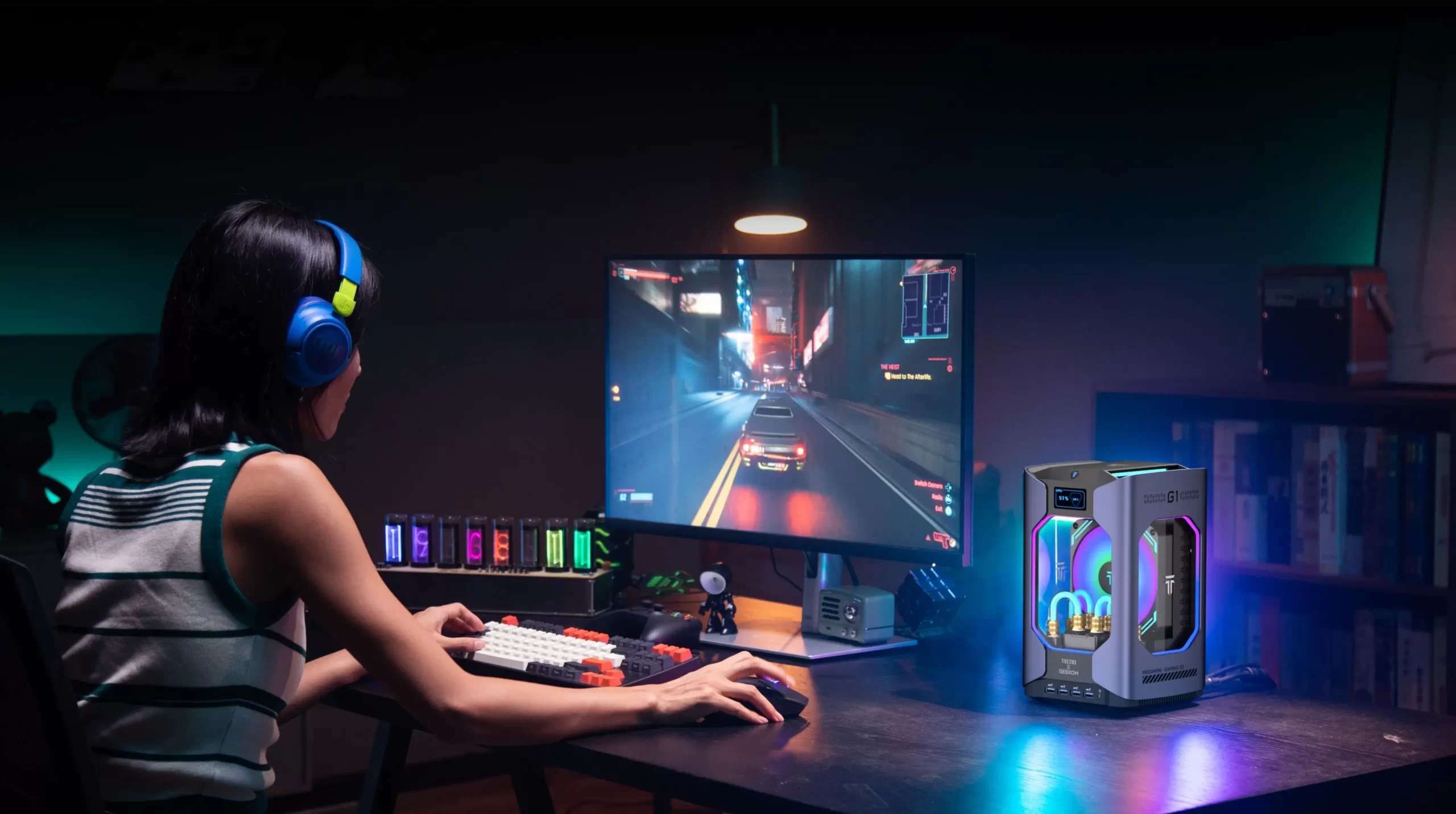
- AAA Games Performance and FPS Values: In contemporary AAA games, the RTX 4060 achieves smooth frame rates at 1080p with high presets. Esports titles typically run in triple digits, whilst story-driven blockbusters are clearly above the 60 FPS mark, depending on graphics level. Those who specifically adjust a few sliders can extract noticeably more reserves. In independent benchmarks, the RTX 4060 achieves around 20 per cent more FPS than the RX 7600 in Cyberpunk 2077 with ray tracing and DLSS enabled, which underscores the advantage in AI features.
- Ray Tracing Gaming Performance: With ray tracing enabled, 1080p remains the comfort zone. In many games, a mix of RT effects, DLSS quality, and slightly reduced shadows is a good formula for stable frame rates with very good visuals.
- DLSS 3 Frame Generation: DLSS 3 significantly increases perceived fluidity. Frame Generation can especially make the difference in graphically heavy scenes without diluting the visuals. For single-player experiences, this is a real bonus; in competitive environments, one decides situationally.
1440p Gaming Test
- Performance at Higher Resolutions: At 1440p, one can play very well with thoughtful settings, especially when DLSS is supported in Quality or Balanced mode. Titles with extreme RT effects additionally benefit from balanced presets. At 1440p Ultra presets, the 1% low values can drop in memory-intensive scenes. In combination with DLSS, however, average FPS remain in the playable range, as tests from Notebookcheck show.
- Optimal Gaming Settings: A pragmatic mix is recommended: high textures, medium to high for shadows and post-processing, DLSS on Quality, Reflex active. This keeps image quality strong whilst input delays remain low.
RTX 4060 in Direct Comparison: Competitiveness and Market Positioning
The RTX 4060 operates in a fiercely contested segment where each generation brings new challenges. To understand the true strength of this mid-range GPU, a direct comparison with the main competitors is essential. It quickly becomes clear: pure benchmark numbers tell only half the story – features, efficiency, and future-proofing play an equally decisive role in the purchasing decision.
| Comparison | RTX 4060 vs. 3060 | RTX 4060 vs. RX 7600 | RTX 4060 vs. 4070 |
|---|---|---|---|
| Performance | More FPS, DLSS 3 | 1080p similar, better with RT/DLSS | 4070 is clearly faster at 1440p |
| Efficiency | ~+25% per watt | 4060 is slightly more efficient | 4060 more economical |
| Features | Ada, DLSS 3, RT | Advantage with RT & DLSS 3 | 12 GB VRAM |
| Target | 1080p | 1080p with RT | 1440p |
| Recommendation | Upgrade for 1080p | Budget with DLSS/RT | Future-proof for 1440p |
RTX 4060 vs. RTX 3060
The RTX 4060 offers a clearly more modern feature base and noticeably better efficiency. Compared to the RTX 3060, Ada Plus DLSS 3 provide more FPS headroom whilst simultaneously consuming less power per frame. According to measurements from IgorsLab, the increased performance per watt averages up to 25 per cent, which makes the card additionally attractive in compact systems.
RTX 4060 vs. AMD RX 7600
Both cards deliver convincing 1080p performance. The NVIDIA GeForce RTX 4060 scores with DLSS 3, mature ray-tracing pipelines, and Reflex. In classic raster scenarios, both are close together; with RT load and AI upscaling, the RTX 4060 has advantages in many cases. Without ray tracing, the RX 7600 can narrowly lead in individual titles, but with RT and DLSS activated, the picture clearly turns in favour of the RTX 4060.
RTX 4060 vs. RTX 4070
Is the Extra Cost Worth It?
The RTX 4070 is faster and offers more reserves for 1440p with high settings. However, those who primarily play at 1080p and are mindful of a fair budget will find that the RTX 4060 offers a more harmonious ratio of price, performance, and efficiency.
Performance Delta and Purchase Recommendation
The delta to the RTX 4070 exists, but it isn’t always relevant when frame rate and visuals at 1080p are already in the desired range. Recommendation: RTX 4060 for focused 1080p gaming, RTX 4070 for ambitious 1440p target profile. Those who set their sights on 1440p Ultra in the long term additionally benefit from 12 GB VRAM with the RTX 4070, which opens up more reserves for textures and ray tracing.
RTX 4060 Power Consumption
In times of rising electricity prices and growing environmental awareness, the energy efficiency of a graphics card becomes increasingly important. The RTX 4060 sets new standards in the mid-range here and proves that modern performance doesn’t necessarily mean high power consumption. This characteristic plays out its strengths particularly well in compact gaming systems and mini PCs.
115W TGP and Power Supply Requirements
With a TGP of 115W, the RTX 4060 remains frugal. A solid power supply with sufficient 12V performance and modern protection circuits is still mandatory. In compact systems, the moderate heat dissipation simplifies case and cooling planning. Compared to the AMD RX 7600 at around 165 watts, consumption is significantly lower, making the card ideal for energy-efficient mini PCs.
For system planning, this specifically means: a 550W power supply is already sufficient for a complete gaming system, whilst the low heat generation also enables passive or semi-passive cooling concepts. In Mini-ITX builds, this is a decisive advantage.
Energy Efficiency in Gaming
The card delivers strong performance in frame rates per watt. This pays off in everyday use, whether during long story evenings or esports marathons. The Ada Lovelace architecture intelligently optimises consumption depending on game requirements – in less demanding titles, power consumption automatically decreases without performance suffering.
Practically, this means: during a four-hour gaming session, the RTX 4060 consumes about 30% less power than comparable competing models. At current electricity prices, this certainly makes itself felt in the utility bill over the year, quite apart from the reduced CO₂ footprint.
RTX 4060 Price-Performance Ratio
For 1080p gaming with contemporary visuals, the balance appears coherent. DLSS 3 extends the lifecycle, Reflex reduces latency, and AV1 makes content creation easier. Those who buy purposefully get a future-friendly foundation with the NVIDIA GeForce RTX 4060. In the United Kingdom, the RTX 4060 usually costs between £279 and £319, whilst the RX 7600 is available from around £299. The moderate premium pays off noticeably in practice through DLSS 3, Reflex, and higher efficiency.
Geekom Megamini G1 with RTX 4060 – Compact Gaming Power
RTX 4060 Power in Mini Format
- 3072 CUDA Cores and 8GB GDDR6 VRAM for 1080p Gaming: The GEEKOM MEGAMINI G1 combines Intel Core i9-13900HK with RTX 4060 and consistently utilises the 3072 CUDA cores plus 8GB GDDR6 for fluid 1080p gaming. Demanding titles run stably, and esports games benefit from very high frame rates.
- DLSS 3 and RTX Raytracing in Compact Design: DLSS 3 increases the frame rate, and ray tracing delivers modern lighting effects. The system remains practical for everyday use through its compact design, which fits on the desk as well as in a living room setup. The efficiency of the RTX 4060 particularly plays out its strength here: less waste heat means quieter gaming and less stress on the water cooling in a case under 6 litres.
- NVIDIA Reflex for Low Latency in Competitive Gaming: NVIDIA Reflex reduces input lag and makes quick aim duels more precise. In combination with high frame rates, a noticeably more direct gaming feel emerges.
- Intel® Core™ i9-13900HK
- NVIDIA GeForce RTX 4060
- AI power with up to 242 TOPS for gaming and high-performance computing
- Dual-channel DDR5-5200 – up to 64 GB
- M.2 2280 Key M SSD – expandable to up to 4 TB
- 15 ports for top connectivity – OCuLink, Type-C & more
- Ultra-quiet water cooling – Dual premium fans
- Real-time performance monitor – Futuristic design
- Wi-Fi 6E | 2.5G Ethernet | Bluetooth 5.2
- Windows 11 Pro pre-installed
Megamini G1 Gaming Advantages
- Full RTX 4060 Performance in Mini PC Size (The World’s Smallest Genesis Gaming PC < 6L): The MEGAMINI G1 Mini Tower PC relies on a very small case volume under 6 litres and brings the performance of an RTX 4060 into a portable format. GEEKOM‘s most compact gaming PC delivers strong performance without wasting space.
- Gaming-Ready System with Pre-installed RTX Optimisation: Windows 11 is ready to go, drivers and tools are quickly set up. Up to 64GB DDR5 offers reserves for games, creative workflows, and multitasking.
- Quiet Gaming Performance for Living Room Gaming: The integrated water cooling supports quiet operation under load. This allows extended sessions to be enjoyed without the fan noise dominating. Additionally, there are 15 ports for monitors, peripherals, and fast storage devices.
You might also be interested in: Water Cooling PC vs. Air Cooling PC
Conclusion
The RTX 4060 remains the 1080p sweet spot in 2026 with modern feature equipment. DLSS 3, ray tracing, and Reflex together form a well-rounded package that is particularly convincing in compact systems. In direct comparison with the RX 7600, it also shows that pure FPS don’t provide the whole picture – features like Frame Generation or low latencies through Reflex make the difference in everyday use. Considering efficiency, equipment, and practical performance, the NVIDIA GeForce RTX 4060 offers a strong ratio of cost and FPS. In combination with the GEEKOM Mini PC, you get a space-saving, quiet system that confidently covers gaming, work, and creativity.
FAQ
Is the RTX 4060 still good?
Yes. For 1080p with high presets and modern features, the card remains highly recommended. DLSS 3 noticeably extends the usage period.
Is 8GB VRAM enough for modern games?
For 1080p in most titles, yes. For very memory-intensive scenes, DLSS quality modes and targeted settings for textures and shadows help.
Is DLSS 3 worth it for gaming?
In single-player titles, Frame Generation often provides significantly more fluidity. In competitive environments, one decides situationally, as input behaviour and clarity vary depending on the title.




